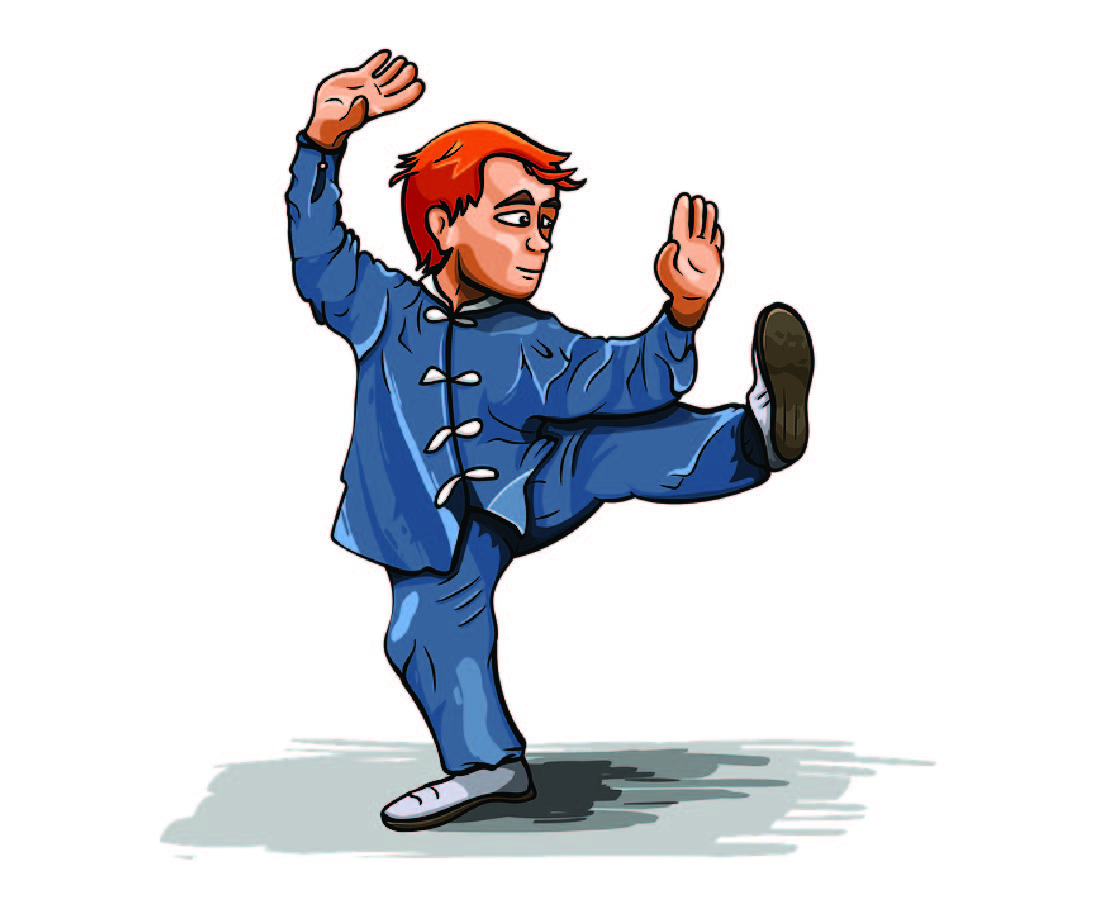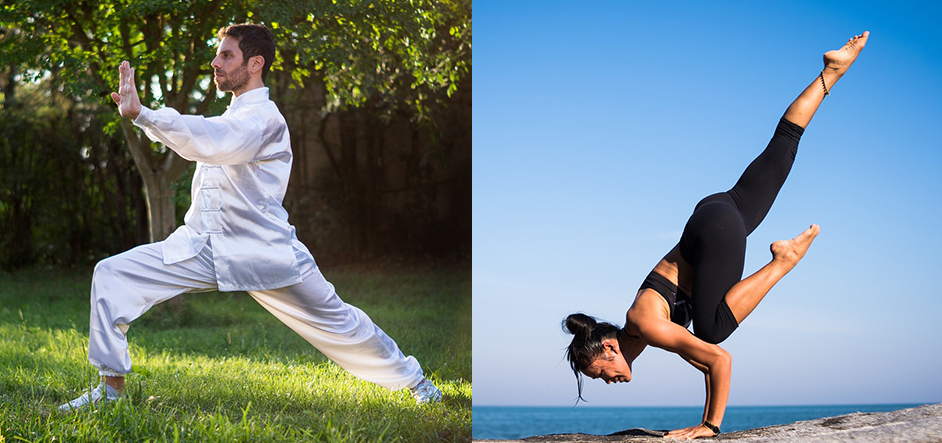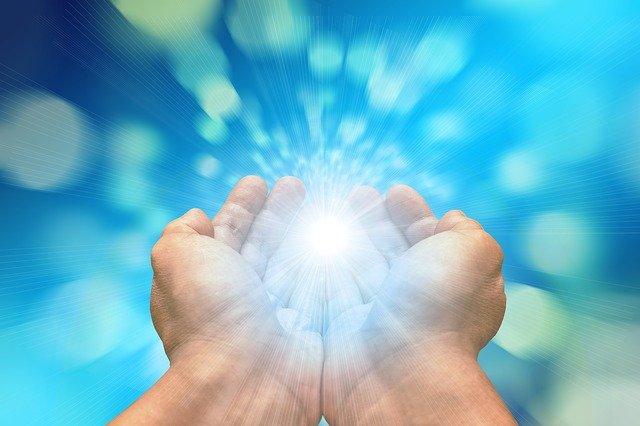
A Simple Definition of Qigong
The most simple way to describe qigong is to look at the literal meaning of the parts of the word. Qi (氣) means energy and Gong (功) means work or skill – so Qigong (氣功) means to work with and develop skill with energy. But what does that actually mean? What does qigong practice look like? And what is it used for? This article will answer all of these questions and provide a simple guide to what qigong is, and to dispel some misconceptions it will also mention some of the things qigong is not.
Qigong comes from China where it has long been recognized that to truly understand living things, we need to not only study and understand their physical structures, but also the living energy that flows through them. This understanding of energy has taken a central place in Chinese philosophy, medicine, and many parts of their culture. With such importance placed on the role of living energy, of course they developed many methods for working with this energy, to become aware of it, to direct it, and to gain skill with it. They applied this knowledge and skill to every pursuit in life, and this is where some of the misconceptions start to come in.
What Qigong Is Not
Because qigong has and can be applied to so many different aspects of life, sometimes people think that all of qigong is about just one aspect of life or pursuit that they have seen it applied to. For example, one misconception I encounter regularly is that qigong is a martial art. I can see where this comes from, someone without much experience or understanding of martial arts sees people moving around in seemingly mysterious to ways doing something with from an Asian origin – the only other things they know of that fit that description are martial arts! But this is not an accurate way to describe or think of qigong. It is true that qigong can be, and has historically been applied to martial arts training, but qigong is not in and of itself a martial art. Rather it is a type of knowledge and set of skills of working with energy that can be applied to martial arts, in the same way that it can be applied to many other things as well.
Another common misconception is that qigong is a religion. Again there is a relationship, but qigong is definitely not a religion itself, but rather something that is sometimes applied within religion. In order to be aware of an understand the living energy flowing through us, we need to develop an understanding of the connection between things. Given that the end goal of many religious traditions is to achieve ‘enlightenment’ practicing this subtle art and the awareness that it brings is a valuable tool along this path. But qigong is certainly not a religion itself anymore than books are religious because they have been used for writing religious teachings within. You can choose whatever you want to write in a book, and you can choose to apply the knowledge and skills of qigong to whatever you choose as well.
What Qigong Is
We’ve given a simple definition of qigong and talked a little about what qigong isn’t, so now its time to explore more of what qigong is.
Qigong is a Gentle Form of Exercise
The most common type of qigong that most people will have seen involves slow gentle, almost dance like movements. You may have seen people doing these types of movement outdoors in parks early in the morning. Often many of the people doing these movements are from the older generation. This has led many people to believe that qigong is a gentle form of exercise, primarily suitable for old people. And some of the most common types of qigong certainly fit that description. They are a GREAT form of exercise, beneficial in so many ways – developing balance, co-ordination, balance, flexibility, and cardiovascular and neurological health, amongst other things. And because the movements are generally so gentle and easy to perform, they can be performed by people of all ages including those of advanced years who want to maintain their physical capabilities for as long as they can.
Qigong certainly often is a beautiful form of gentle exercise, and for many people this will be their primary interest in it – but it can be, and is, far more than that too. Remember, qigong is used by martial artists to enhance their performance as well, so not all types of qigong are gentle or primarily for older people
How does Qigong Compare to Other Mind Body Practices?
The core components of most qigong practices, whether they are gentle or vigorous, are the mind, the body, and the breath. By harnessing these three together, we are able to work effectively with our energy. The use of these three components together often leads qigong to be compared to or even sometimes confused with other mind/body practices. The two most common practices that qigong is compared to are yoga and tai chi.
There are lots of good comparisons to make between these different mind body arts, and qigong is even sometimes referred to as ‘Chinese Yoga’ (conversely, in China they often refer to yoga as ‘Indian Qigong’),which is really not a bad way to help people to understand the similarity between these often quite different looking practices. There are some important differences and distinctions as well though, that has lead to the differences in ‘flavour’ and focus of these arts. If you would like to examine this further, I wrote a whole article making point by point comparisons of yoga and qigong that you can read here.
When people first come into contact with qigong, their first response is often to think that it is a bit like tai chi, as people are often more familiar with the name Tai Chi, than they are Qigong. Again – its not a bad comparison, but it’s a bit back to front. You see tai chi is a type of qigong. It is a specific focus, and specific application of qigong principles of working with energy to a very graceful martial art. But qigong is much more than that, it can be applied to every area of life, not just martial arts. So while all tai chi is a type of qigong, not all qigong is tai chi. If you want to learn more about the differences between tai chi and qigong, there is another article you can read here.
Qigong Can Be Used for Healing
One of the most common applications of qigong in both ancient times and today is to healing. Tuning into the flow of energy within your body and directing it either with gentle movement and breath, or through other means, can be a powerful form of self healing. But the application of qigong to healing goes far beyond that. As a practitioner gradually develops skill and strength with their energy, and their perception and understanding of the pattern of energy flow within the body grows, they can use this skill to also direct and balance the energy within other people as well, removing blockages and creating conditions for health and harmony within. In this way qigong can be used not only as a way to heal yourself, but also as a way to help others as well.
The Essence of Qigong is Energy
The field of qigong is so broad that it is very hard to put in a box and say that it is just one thing or another, because while qigong often involves gentle moving exercise – there are other types of qigong practice that don’t involve movement at all! In fact I wrote an article on this specific topic awhile ago titled ‘Qigong is not a Movement Art’ exploring this topic in detail. While many of the most common forms of qigong practice involved gentle movement, and breathing, combined with mental focus, to even say that all qigong practices are about working with the mind, body, and breath is not strictly true, as there are so many diverse ways to work with the energy, all of which are types of ‘qigong’.
The one thing that unites them all is a focus on energy! If it is working with energy, then it is a type of qigong. To restrict our understanding of qigong to just one type of practice, or area of application would be to severely limit our understanding of the possibilities of qigong.
Most likely the first qigong practices you do will involve gentle movements, control of your breath, and mental focus, to help you to tune in to your energy and begin to understand it and start the process of directing your energy, but as you continue on your qigong journey you may also encounter many other types of qigong practice to work with your energy.
Whatever method you use, starting this process of being aware of our energy and working with it opens up a whole new perspective on the world, and new ways to interact with it to find achieve ultimate health and harmony.
Exploring Qigong Further
It is interesting to learn about qigong, and what it is, and theories around it, but a true appreciation and understanding of qigong comes only from actually doing it! It really is about the practice. If you want to take the next step and try some qigong practices, you can check out the Long White Cloud Qigong online courses here. Each course goes deep into different practices and aspects of qigong. You can find a complete menu of our courses here, and Online Qigong Instructor Training here.
Make sure you subscribe to our newsletter to receive updates about new courses, as well as informative articles like this one as they become available.





1 Comment. Leave new
This is great information!